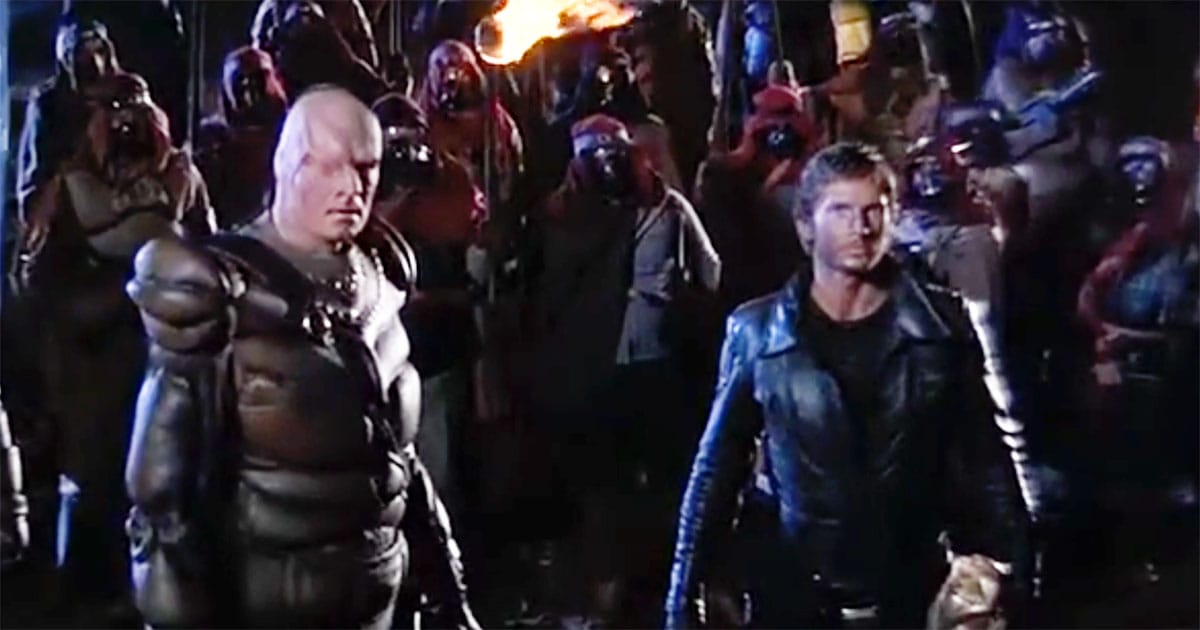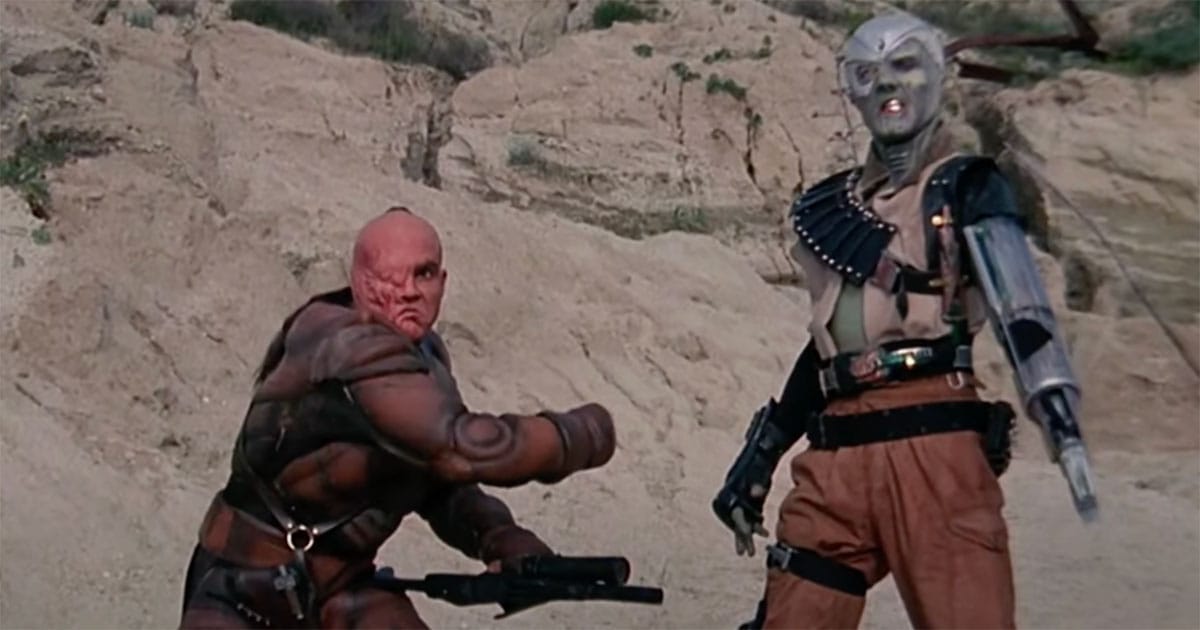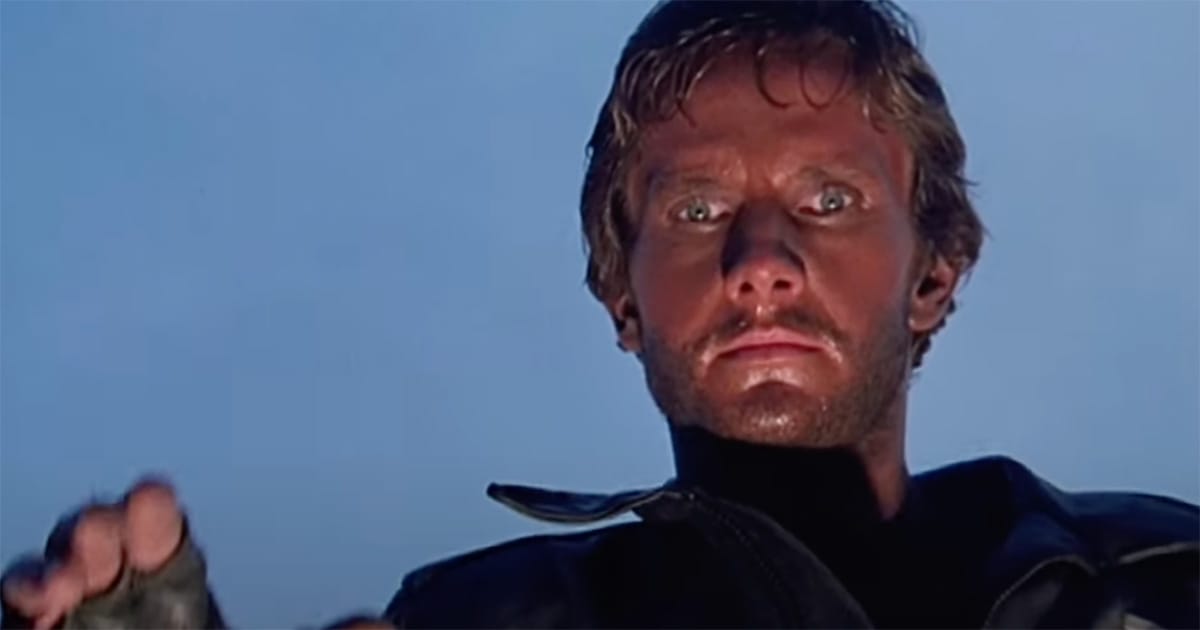The Summer Metalstorm Hit Theaters
Released in August 1983, "Metalstorm The Destruction of Jared-Syn" brought desert science fiction and 3D adventure to theaters in a bold attempt to start a new kind of cinematic universe.

This Week in Classic Science Fiction -The Bold Arrival of Metalstorm
On August 19, 1983, "Metalstorm The Destruction of Jared-Syn" blasted into theaters in 3D. Marketed as a science fiction epic in the vein of "Star Wars" and "The Road Warrior," the film delivered a post-apocalyptic desert, laser battles, and one of the longest titles in B-movie history.
Directed by Charles Band and distributed by Universal Pictures, "Metalstorm" followed a space ranger named Dogen as he pursued the evil warlock Jared-Syn across a scorched alien wasteland. It featured floating sorcery, chrome-plated vehicles, and Tim Thomerson wielding dry one-liners with veteran skill. Kelly Preston also appeared in one of her earliest roles.
Though it failed to launch the franchise Band envisioned, "Metalstorm" helped lay the foundation for his later success with low-budget science fiction through Full Moon Features. The film also rode the crest of the early 1980s 3D revival, which included "Jaws 3-D" and "Spacehunter Adventures in the Forbidden Zone." What it lacked in polish, it made up for in wild ambition.
Forty years later, "Metalstorm" remains a cult curiosity—a reminder that in the world of science fiction, even a flawed film can still earn a place on the shelf, especially if it once hurled rocks and laser beams straight at your face.
Sponsor: Mini Cartoon Mech Battle

Suit up for sci-fi skirmish. This soft, lightweight tee features a colorful cartoon mech battle that brings big action and bold style to your everyday rotation. Fun, comfortable, and ready for any terrain.
That August When Sci-Fi Got Dusty and Brave
In August 1983, science fiction fans were invited into the sandblasted world of Lemuria. There were no droids or Death Stars, but there was a ranger named Dogen, a warlock called Jared-Syn, and a glowing crystal that could trap your soul. The film was "Metalstorm The Destruction of Jared-Syn," and it hit theaters on August 19, right in the heat of a summer that already had its share of galactic drama.
But "Metalstorm" was doing something different.
It was not set in space. It was set in the dirt. It did not have a massive budget, but it had a clear sense of what kind of science fiction it wanted to be. With practical effects, rugged landscapes, and bold 3D visuals, "Metalstorm" carved out its own path during a crowded movie season. It might not have had the polish of the big franchises, but it had purpose.
A Bold Release for a Risky Film
The film’s August release date tells part of the story. Summer was a competitive season, but also one filled with possibilities. "Metalstorm" arrived with a full theatrical rollout, backed by Universal Pictures and outfitted with 3D technology that promised flying rocks, spears, and laser blasts. It was a film built for the big screen.

Rather than follow the clean lines of space opera, it blended genres. The world of Lemuria felt like a post-apocalyptic frontier. Dogen rode a dusty vehicle through carved red canyons. The villain wielded mystic energy. And the One Eyes—mutated desert tribes—added a layer of ancient mystery.
It was not easy to summarize, and that may have been the point. "Metalstorm" came to theaters as a self-contained adventure, but it hinted at a much larger story. The characters spoke of past betrayals, ancient powers, and political orders we never saw. It felt like one chapter of something bigger.
Science Fiction in 3D
"Metalstorm" arrived in the middle of a 3D revival, joining films like "Spacehunter Adventures in the Forbidden Zone" and "Jaws 3-D." These movies promised something more than narrative. They promised immersion. That August, fans were looking not just to watch science fiction, but to feel like they were inside it.
The 3D effects in "Metalstorm" made clever use of the environment. Scenes were composed with layers of rock, metal, and energy that pushed forward into the frame. The action took place in canyons, tunnels, and underground chambers, which suited the visual format. It was not just a gimmick. It was part of the film’s style.
And for many fans, that was enough. It gave them a reason to go to the theater that weekend. It gave them a story that looked and moved differently than the polished mainstream science fiction of the day.
A Filmmaker's Turning Point
Director Charles Band had been working steadily in genre film, but "Metalstorm" was his biggest step yet. It was the kind of movie that required conviction. Band and his crew believed in the story they were telling. That belief came through, even in scenes where the budget was stretched thin.

What followed was not the sequel they had hoped to make, but a new direction. Band went on to form Empire Pictures and later Full Moon Features. With those companies, he would produce dozens of science fiction and horror films with the same adventurous spirit. He never stopped building strange worlds.
Looking back, "Metalstorm" was the blueprint. It combined fantasy elements with science fiction action. It gave actors like Tim Thomerson and Kelly Preston early roles in unusual settings. And it treated pulp storytelling with seriousness. That mindset shaped Band’s work for decades.
A Theater Experience Worth Remembering
The legacy of "Metalstorm" is not measured by box office numbers. It is measured by memory. For those who saw it in theaters in August 1983, the experience was unlike anything else. The glasses. The sand. The music. The sense that you were seeing a part of science fiction that didn’t need to look like anything before it.
"Metalstorm" might not be a household name, but it left a lasting impression. It showed that with creativity and courage, even a modest film could take its place in the science fiction landscape. It reminded audiences that adventure could come from the ground up. Literally.
And in doing so, it earned more than just a cult following. It earned respect.
"Metalstorm" Trivia
- "Metalstorm The Destruction of Jared-Syn" was filmed in California’s Red Rock Canyon, a dramatic desert location also used in classic episodes of "Star Trek" and "Planet of the Apes."
- The film was released in stereoscopic 3D during the 1983 revival of the format, using practical effects and clever staging to deliver flying debris, laser blasts, and immersive canyon battles.
- Director Charles Band later credited "Metalstorm" as the foundation for his career in science fiction filmmaking, influencing his work on "Trancers," "Dollman," and dozens of other genre films produced through his own studios.

